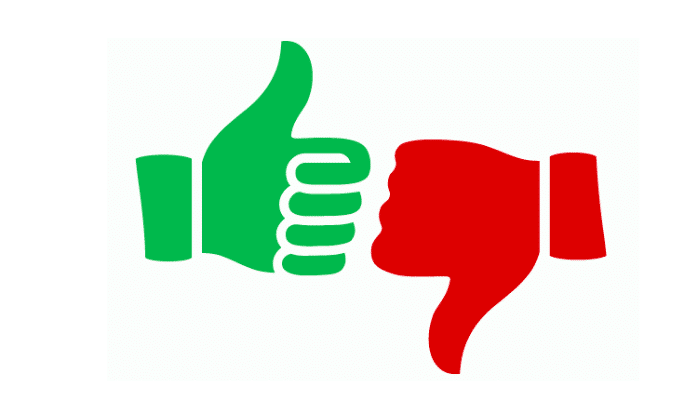
As they say, an image can tell a thousand stories. But, why should you bother while you have only one to tell? In this case, it is important to choose just one very relevant piece to speak for you. The selection should be based on the target niche. For that matter, you require the right words coupled with the right images to convey your messages. A story that can appeal to the deep desires of onlookers, must be told through these images.
According to studies, people can decode messages hidden in the image, in a better way compared to words. Such understanding has a lasting impression on human mind. If there is a gap between what you see and what you hear, brain usually chooses what you see. Brain always prioritizes visual information over others. Image always is the fast track to connecting marketers. Just a stock photo cannot help you building that connection. Check out the right methods to finding the most apt image.
A strong foundation is important…
It is important to be very careful while using a particular slab of text with an image. The image must add value to the text and not refute it. A truly powerful image is that which can speak to the target audience on a symbolic level. The brand should try to associate with the target audience with intuition. Human understands matter in a better way through association. Both, Carl Jung and Sigmund Freud feel that niche target derive multifaceted information from visual cues.
The magic of an effective symbol has strange abilities to disseminate messages to both, conscious and subconscious human minds. Choose images for marketing copy, not only thinking about what you want to say, but what you want people to feel. According to psychologists, a symbol can disseminate multiple significances at the same time. Every individual symbol can have two different values, one on the surface while the other remains hidden. The hidden value, in most cases is derived from the functional point of views.
The face value of an image can have a hugely undifferentiated impulse and feeling that often do not lead to consciousness. Image is important for such feelings because they often cannot be put in words effectively. It is difficult attaining them without the aid of smartly chosen photographs with powerful influence.
While selecting the image, it is important to keep in mind what type of photographs can reflect the buyer persona with the buyer’s demographic information in mind. Success lies in identifying motivation to use them for quality visual representation of the niche target’s most desired element.
The image must represent an experience and not only a product…
While selecting an image, you should keep in mind the outcome of buying your product instead of just the look and feel of that. If you have plans to sell a hammock, it is important to offer the target customers a nice cozy feel that they are about to get after buying it. The picture accompanying a marketing document should offer a virtual experience of similar nature. More than the product, you sell the desired experience of repose and relaxation to the targeted viewers.
Numbers compel viewers faster…
Some of the customers are not easily convinced about certain matters, especially where ROI matters the most to them. Conversion depends heavily on credibility of a brand. A text accompanying an image can bring high level of credibility to it. While evaluating claims, people trust the subjective feelings of truth. An image is a lot better than nothing, but only the right image can do the magic. It is worth more than anything is. The right image backed by the most credible text and apt numbers, statistics, graphs, charts has the most effective impact on the mind of your target audience. Logical buyers have greater belief in the evidences of numeric, graphs, and charts.
How to Select the Right Image to Grab Attention
1. Understand Your Audience
Before choosing an image, you must first understand who your target audience is. What are their interests, values, and demographics? This will help you select images that resonate with them.
2. Use High-Quality Images
Blurry or pixelated images can come off as unprofessional and may turn your audience away. Always use high-resolution images.
3. Make it Relevant
The image should be relevant to the content or message you’re trying to convey. Irrelevant images can confuse your audience and dilute your message.
4. Consider Emotions
Images that evoke emotions can have a powerful impact on your audience. Think about the feelings you want to evoke and choose images that can do this effectively.
5. Use People and Faces
Images of people, especially faces, tend to grab attention. People naturally connect with other people, so consider using images with faces to create an emotional connection.
6. Include Text and Graphics
Sometimes, an image alone is not enough. Consider adding text or graphics to provide context or highlight key points.
7. Test Different Images
What works for one audience might not work for another. Test different images to see which ones perform best. This can be done through A/B testing or by analyzing engagement metrics.
8. Follow Brand Guidelines
Ensure your images align with your brand’s style guide. Consistency in color schemes, fonts, and overall style helps to reinforce your brand identity.
Remember, the right image can significantly enhance your message and engage your target audience. So take the time to select the best image for your needs.
Some powerful tools to make stunning visuals to attract target audience
Here are some powerful tools that you can use to create stunning visuals:
- Canva: This tool is great for creating social media graphics, presentations, posters and other visual content. It features an easy to use drag-and-drop interface and a vast library of templates.
- Adobe Spark: Adobe Spark is a suite of design tools that allows you to create graphics, web pages, and video stories. It also comes with a selection of free photos, fonts, and themes.
- Piktochart: Piktochart is a tool for creating infographics, presentations, and printables. It provides a variety of templates that are easy to customize.
- Venngage: Venngage is another tool for creating infographics. It offers customizable templates, charts, and icons.
- Visme: Visme is a versatile tool that can be used to create presentations, infographics, social media graphics, videos, and more. It includes a range of free images, icons, and data visualization tools.
- Snappa: Snappa is a graphic design tool perfect for creating online graphics for social media, blogs, ads, and more. It’s simple to use and offers a library of templates and free stock photos.
- Stencil: Stencil is designed to help you create beautiful looking images faster. Great for social media marketers, bloggers and solopreneurs.
- Infogram: Infogram is a data visualization tool that allows you to create infographics, charts, and maps. It’s particularly useful when you need to visualize data in a clear and engaging way.
Remember, the best tool depends on your specific needs and the type of visual content you want to create.
The thread of information that run through all points regarding considerations for choosing the right image for maximum visual impact focus on the matter of credibility. Visuals that are easy to find, might not be the right product for compelling the target niche. A diligent search is important to find the best ones. That can help your brand to stand out and have a poignant impact on human mind.








0 Comments